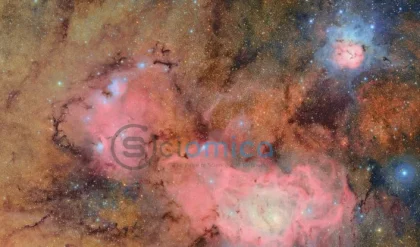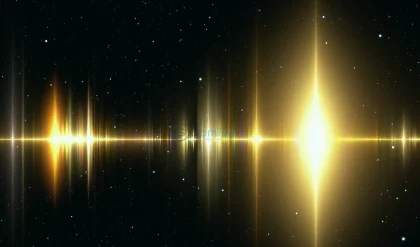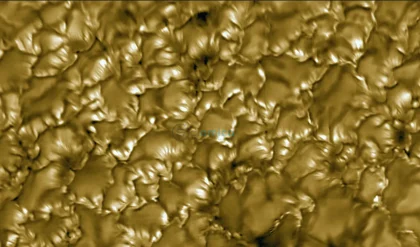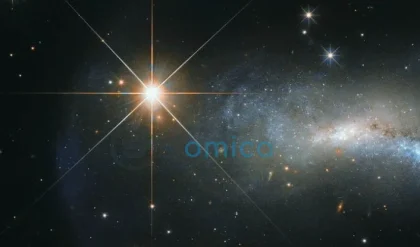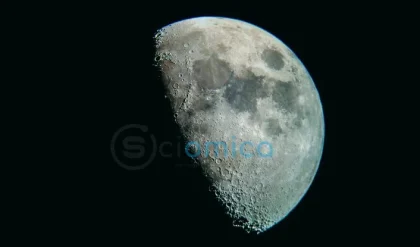
A research team led by the University of Southern California (USC) has developed a series of sophisticated supercomputer simulations of the Milky Way galaxy, aiming to address one of the foremost enigmas in astrophysics: dark matter. This elusive substance constitutes approximately 85% of the universe’s matter yet remains largely undetectable, prompting scientists to seek innovative ways to better understand its properties and interactions.
The project, dubbed “COZMIC,” which stands for “Cosmological Zoom-in Simulations with Initial Conditions beyond Cold Dark Matter,” is spearheaded by renowned cosmologist Vera Gluscevic from USC Dornsife College of Letters, Arts, and Sciences, alongside Ethan Nadler, an assistant professor at the University of California, San Diego, and Andrew Benson, a staff scientist at Carnegie Observatories. Their groundbreaking findings were published on June 16 in The Astrophysical Journal.
For decades, researchers have acknowledged the existence of dark matter, particularly due to its gravitational influence on the motion and cohesion of galaxies. The phenomenon is illustrated by the rapid spinning of galaxies, which should theoretically cause them to disband; however, their formation indicates the presence of an unseen force—many attribute this force to dark matter, a hypothesis originally proposed by Swiss astronomer Fritz Zwicky in 1933.
Studying dark matter presents significant challenges, as it does not emit light or energy detectable by conventional means. As a result, scientists typically observe the impacts of dark matter on visible astronomical structures, much like analyzing a shadow without seeing the object casting it. In this context, the COZMIC project marks a significant advancement, enabling researchers to explore how galaxies form and evolve in a universe where dark and normal matter interact.
The research team implemented novel physical theories beyond standard models of particle physics and relativity. By leveraging advanced supercomputing resources, COZMIC allows for highly detailed simulations that provide insights into various potential behaviors of dark matter.
“This enables us to analyze the masses and other quantum properties of dark matter particles, and assess their interactions with normal matter,” Gluscevic explained. “With COZMIC, we’re simulating galaxies under radically different physical parameters for the first time, allowing us to test these theories using actual astronomical observations.”
The team aimed to differentiate between various dark matter models by examining the formation and characteristics of small galaxies. Nadler emphasized that the simulations could yield critical insights into the distinctions between competing dark matter theories.
Benson added that by programming new physics into the simulations, the research produced a galaxy structure reflective of the intricate dynamics between both dark and normal matter. Gluscevic noted that while previous simulations primarily focused on dark matter mass and self-interaction, none had fully accounted for interactions between dark and normal matter, which are considered realistic possibilities.
The results of COZMIC offer a promising leap towards uncovering the true nature of dark matter. By juxtaposing their simulated galaxies with actual astronomical images, the researchers aim to refine their understanding of celestial structures and the workings of the universe.
As Gluscevic pointed out, “We’re finally able to ask, ‘Which version of the universe resembles ours most closely?'” Looking forward, the COZMIC team plans to further validate their simulations against telescope data to identify potential signs of dark matter in genuine galaxies, an endeavor that could bring them significantly closer to unraveling the mysteries surrounding dark matter and its role in shaping the cosmos.
Journal References:
- Ethan O. Nadler, Rui An, Vera Gluscevic, Andrew Benson, Xiaolong Du. COZMIC. I. Cosmological Zoom-in Simulations with Initial Conditions Beyond Cold Dark Matter. The Astrophysical Journal, 2025; 986 (2): 127 DOI: 10.3847/1538-4357/adceef
- Rui An, Ethan O. Nadler, Andrew Benson, Vera Gluscevic. COZMIC. II. Cosmological Zoom-in Simulations with Fractional non-CDM Initial Conditions. The Astrophysical Journal, 2025; 986 (2): 128 DOI: 10.3847/1538-4357/adce83
- Ethan O. Nadler, Rui An, Daneng Yang, Hai-Bo Yu, Andrew Benson, Vera Gluscevic. COZMIC. III. Cosmological Zoom-in Simulations of Self-interacting Dark Matter with Suppressed Initial Conditions. The Astrophysical Journal, 2025; 986 (2): 129 DOI: 10.3847/1538-4357/adce82


